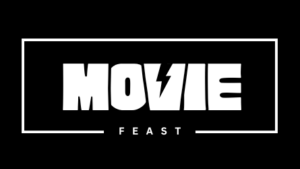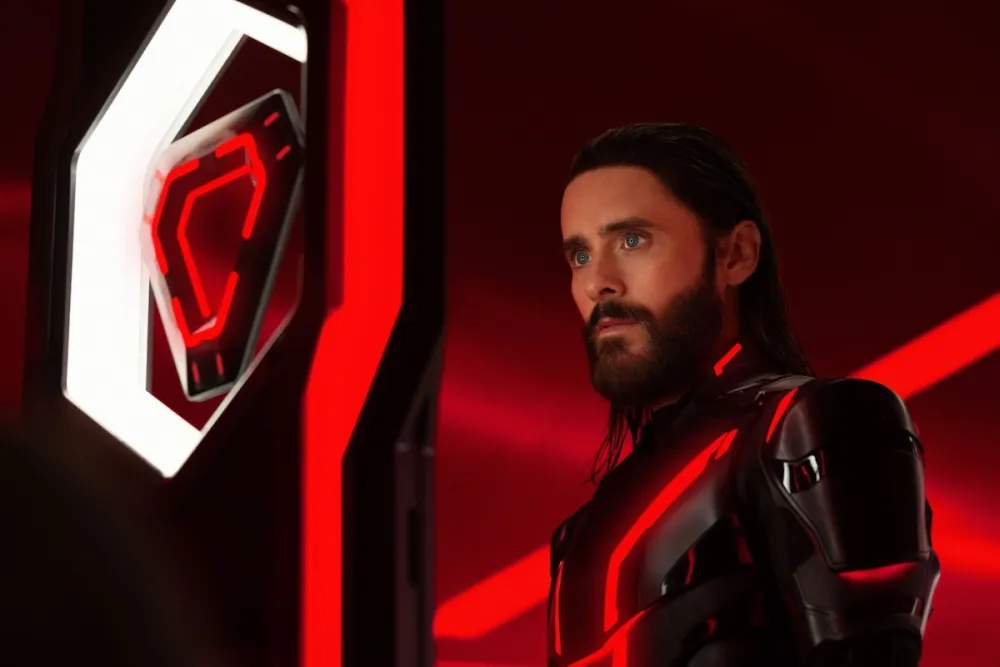The Tron franchise returns to theaters with Tron: Ares, a visually stunning continuation of the digital universe that captivated audiences decades ago. Directed by Joachim Rønning and featuring Jared Leto in the lead role, this 2025 release promises cutting-edge visual effects and an exploration of artificial intelligence that feels particularly timely in our technology-driven age.
For parents wondering whether to bring their children along for this digital adventure, the decision isn’t straightforward. While Tron: Ares offers spectacular imagery and thought-provoking themes about technology and humanity, it also contains elements that may concern parents of younger viewers. This guide will walk you through everything you need to know to make an informed decision for your family.

Plot Summary (Spoiler-Free)
Tron: Ares follows a sentient program named Ares who emerges from the digital Grid into the real world. Unlike previous films where humans entered the computer realm, this story reverses the premise—exploring what happens when an artificial being crosses into our physical reality. Ares must navigate the complexities of human existence while grappling with his programmed purpose and developing consciousness.
The film introduces new characters alongside references to the original Tron mythology, creating a bridge between legacy fans and newcomers. The central conflict revolves around questions of identity, free will, and the increasingly blurred line between digital and physical existence. Without spoiling key plot points, the story takes audiences on a journey that questions what it means to be alive and conscious in an age where artificial intelligence grows more sophisticated daily.
What Parents Should Be Aware Of
Violence and Action Sequences
Tron: Ares earns its PG-13 rating primarily through its action content. The violence, while stylized and often set against the neon-lit digital landscape, occurs with moderate frequency throughout the film.
Specific concerns include:
- Digital combat sequences where programs “de-rez” (disintegrate into pixels) when defeated. While not gory in a traditional sense, these deaths can be visually intense, with characters shattering into fragments of light. There are approximately 4-5 major action sequences featuring this type of violence.
- One particularly intense scene in the real world involves a vehicle chase with realistic crash consequences. Unlike the digital sequences, this scene shows actual property damage and implied human injury, though nothing graphic is shown on screen.
- Hand-to-hand combat appears in several scenes, with characters using glowing weapons (similar to the iconic identity discs from previous films). The choreography is impressive but includes kicks, punches, and throws that result in characters being knocked unconscious or injured.
- Threatening situations where main characters face mortal danger create tension, particularly in the film’s third act when stakes escalate considerably.
The violence never crosses into R-rated territory—there’s no blood, no graphic injury detail, and no torture scenes. However, the sheer visual spectacle and intensity of some action sequences may overwhelm children under 10, particularly those sensitive to fast-paced chaos or characters in peril.
Language and Profanity
The language in Tron: Ares remains relatively mild for a PG-13 film, making this one of the lesser concerns for most parents.
What to expect:
- Approximately 3-4 uses of mild profanity, including “hell” and “damn” in moments of frustration or danger
- One use of a stronger word (bleeped or obscured in context) during a heated confrontation
- Some sci-fi specific terminology that might confuse younger viewers but isn’t inappropriate
- No sexual language or crude humor
Parents who are comfortable with typical PG-13 language standards will find nothing surprising here. The film focuses more on philosophical dialogue than crude exchanges, which actually makes it more intellectually engaging for older children and teens.
Sexual Content and Nudity
Tron: Ares is essentially free of sexual content, which distinguishes it from many contemporary PG-13 films.
What appears:
- A brief romantic subplot involving adult characters that includes one kiss—entirely appropriate and non-sexual in nature
- Characters wear form-fitting digital suits in Grid sequences (similar to the aesthetic of previous Tron films), but nothing is sexualized
- One scene in a nightclub setting with background dancers, though nothing inappropriate is highlighted
Parents can feel confident that this aspect of the film poses virtually no concern for viewers of any age. The film’s focus remains squarely on its science fiction premise rather than romantic or sexual relationships.
Thematic Content and Complex Ideas
This is where Tron: Ares becomes more nuanced from a parenting perspective. The film tackles sophisticated philosophical questions that may be challenging for younger minds.
Themes include:
- Existential questions about consciousness: Ares struggles with whether his thoughts and feelings are “real” or simply programmed responses. This exploration of artificial intelligence and sentience may be confusing or even unsettling for children who aren’t ready for abstract philosophical concepts.
- Identity and belonging: The protagonist doesn’t fit in either the digital or physical world, creating a sense of isolation that some children might find emotionally heavy.
- Corporate exploitation of technology: Without being preachy, the film presents scenarios where powerful companies misuse AI for profit, touching on real-world ethical concerns.
- Sacrifice and moral choice: Characters face decisions where the “right” answer isn’t always clear, presenting moral ambiguity that younger viewers might find uncomfortable.
- The nature of humanity: What makes someone human? Can artificial beings have souls? These questions run throughout the narrative.
For mature tweens and teenagers, these themes provide excellent discussion fodder. For younger children, they may simply fly overhead or create confusion about complex topics they’re not developmentally ready to process.
Scary or Intense Moments
Beyond the action sequences, several moments may frighten younger or more sensitive viewers:
- The Grid environment itself can be disorienting, with its stark digital landscape, towering structures, and alien geometry. Children who found the dark, tech-heavy atmosphere of films like The Matrix frightening may have similar reactions.
- One scene features a character experiencing a system malfunction, with glitching visuals and audio that create a disturbing, almost horror-movie effect for about 30 seconds.
- Moments of isolation and vulnerability where Ares is overwhelmed by the sensory experience of the real world (crowds, noise, physical sensations) could resonate uncomfortably with children who experience anxiety.
- The film’s antagonist isn’t cartoonishly evil but coldly logical, making their threat feel more real and potentially more frightening than a mustache-twirling villain.
The overall tone skews serious rather than fun-adventure, which may not match younger children’s expectations for a sci-fi film.
Positive and Educational Aspects
Despite the concerns listed above, Tron: Ares offers substantial value for families with age-appropriate viewers.
Valuable Messages and Themes
Empathy and understanding: Ares’s journey into the human world essentially creates a “fish out of water” story that teaches viewers about seeing the world through different perspectives. His fresh eyes on everyday human experiences—emotions, physical sensations, social connections—remind us not to take these things for granted.
Questioning authority and thinking critically: Multiple characters challenge the decisions of powerful entities, modeling the importance of ethical thinking over blind obedience. This encourages young viewers to consider consequences and think beyond “just following orders.”
Embracing what makes you different: Ares’s struggle with being neither fully program nor human ultimately becomes a story about accepting hybrid identity and finding strength in uniqueness—a powerful message for any child feeling like they don’t quite fit in.
Technology ethics: The film raises important questions about AI development, corporate responsibility, and the unintended consequences of unchecked technological advancement. For teens growing up in an AI-integrated world, these discussions are increasingly relevant.
Friendship across differences: Relationships between human and digital characters demonstrate that meaningful connections can form despite fundamental differences in nature or origin.
Educational Opportunities
Tron: Ares creates natural opportunities for parent-child discussions about:
- Computer science basics: The film’s digital world provides a springboard for explaining how computers and programs actually work (in simplified terms)
- Philosophy 101: Questions about consciousness, free will, and what defines life or personhood
- Media literacy: Discussing how the film depicts technology versus reality, understanding that Hollywood takes creative liberties
- Career exploration: The film features programmers, engineers, and tech entrepreneurs, potentially sparking interest in STEM fields
The visual effects alone offer a chance to discuss digital artistry, filmmaking technology, and the creative process behind blockbuster movies.
Representation and Diversity
The cast features diverse representation across gender, race, and age, presenting a world that reflects real demographics. Female characters hold positions of authority and expertise without this being treated as unusual or remarkable—simply normalized. This subtle representation teaches children that capability isn’t determined by demographic factors.
Age Recommendation and Rationale
Based on content analysis and developmental appropriateness, here’s my recommendation:
Ages 12 and up: Ideal audience. Preteens and teenagers will appreciate the action, understand the themes, and engage with the philosophical questions without being overwhelmed by intensity or complexity.
Ages 9-11: Possible with parental guidance and depending on individual maturity. Children in this range who enjoy science fiction, have seen similar PG-13 films, and can handle moderately intense action may do fine. However, some may find the slower, more contemplative pacing boring, while others might be disturbed by the existential themes they don’t fully grasp.
Ages 8 and under: Generally not recommended. The combination of intense action, complex themes, scary moments, and lack of humor or lighter elements makes this inappropriate for most younger children. They’re unlikely to follow the plot and may be frightened or bored.
Special considerations:
- Children who loved Tron: Legacy and are familiar with the franchise will have better context and appreciation
- Kids sensitive to loud noises or flashing lights should be aware of the sensory-intense digital sequences
- Children dealing with anxiety or questions about identity might find the themes either validating or overwhelming, depending on individual circumstances
Parental Tips for Viewing
If you decide Tron: Ares is appropriate for your family, consider these strategies to maximize the positive experience:
Before Watching
Set expectations: Explain that this is a serious science fiction film, not a comedy or light adventure. Prepare them for thoughtful pacing between action sequences.
Review the original films: While not strictly necessary, watching Tron (1982) or Tron: Legacy (2010) provides helpful context. At minimum, explain the basic concept of people/programs entering a digital world.
Discuss AI basics: A brief conversation about what artificial intelligence is and how computers process information will help children understand Ares’s perspective.
During the Movie
Choose your format carefully: The immersive visuals work beautifully in theaters but can be overwhelming. If your child is sensitive to sensory input, consider waiting for home release where you can control volume and pause if needed.
Sit strategically: If attending theaters with a younger child who might need reassurance, choose aisle seats for easy exit if they become frightened or need a break.
Watch for engagement: Notice whether your child seems bored, confused, or frightened. Don’t hesitate to leave if they’re genuinely distressed—no movie is worth real anxiety.
After Watching
Process together: Ask open-ended questions like “What did you think about Ares’s journey?” or “If you were a program that became aware, what would you want to experience in the real world?”
Address scary parts: If something frightened them, talk it through. Explain the filmmaking techniques that created those effects, demystifying the “magic” to reduce fear.
Connect to real life: Discuss how the film’s themes relate to real-world technology use, social media, AI assistants, and other relevant topics in their lives.
Explore further interest: If they loved the technical aspects, this might be a perfect time to introduce basic coding activities, computer science concepts, or other STEM enrichment.
Comparison to Similar Films
Understanding where Tron: Ares sits in the landscape of similar movies helps contextualize appropriateness:
More intense than: Ready Player One (more cartoonish violence, lighter themes), WALL-E (much gentler tone), Big Hero 6 (kid-friendly superhero elements)
Similar intensity to: Tron: Legacy (very comparable), The Matrix (though Matrix has more explicit violence), Ender’s Game (similar age appropriateness)
Less intense than: Blade Runner 2049 (darker tone, more adult themes), Ex Machina (too mature for children), Ghost in the Shell (more violent and complex)
If your child handled Tron: Legacy, Spider-Man: Into the Spider-Verse, or Star Wars sequel trilogy films well, they can likely handle Ares.
Final Verdict
Tron: Ares is a visually spectacular, intellectually engaging science fiction film that asks big questions about consciousness, identity, and humanity’s relationship with technology. However, it’s decidedly not a children’s movie despite its sci-fi adventure premise.
The bottom line: This film works best for families with children 12 and older who enjoy thought-provoking science fiction. The moderate action violence, intense sequences, and complex philosophical themes make it inappropriate for younger viewers, while the spectacular visuals and relevant AI-related storyline make it highly worthwhile for the right audience.
Parents should appreciate that Tron: Ares trusts its audience with difficult questions rather than providing easy answers—a refreshing approach that creates opportunities for meaningful family discussions about technology, ethics, and what it means to be human in an increasingly digital age.
For families with mature preteens or teenagers, particularly those interested in technology, philosophy, or science fiction, this is an excellent choice for a shared viewing experience that will spark conversations long after the credits roll.
Frequently Asked Questions
Q: Is Tron: Ares appropriate for a 10-year-old?
A: It depends on the individual child. A mature 10-year-old who loves science fiction and has seen similar PG-13 films might be fine with parental guidance. However, many 10-year-olds will find the complex themes confusing and the intense action sequences overwhelming. Consider your child’s specific maturity level, comfort with moderately intense action, and attention span for slower-paced storytelling.
Q: Do we need to see the previous Tron movies first?
A: Not strictly necessary, but helpful. Tron: Ares includes enough explanation for newcomers to follow along, but familiarity with the franchise’s digital world concept, visual style, and basic mythology enhances the experience. At minimum, reading a plot summary of the previous films or watching a YouTube explainer would be beneficial.
Q: How scary is this movie compared to Marvel superhero films?
A: The action intensity is comparable to most Marvel films, but Tron: Ares has a darker, more serious tone with fewer comic relief moments. The “scary” elements are more existential and psychological than jump-scare frightening. Children who handle Marvel films well will likely manage the action, but may find the heavier themes less entertaining.
Q: Are there any scenes I should preview or consider skipping?
A: The most intense moments include the vehicle chase sequence in the real world (approximately 45 minutes in) and the final confrontation in the third act. The system malfunction/glitching scene (roughly midway through) is the most potentially disturbing for sensitive viewers. If watching at home, these are moments you might preview first.
Q: Does the movie promote any particular religious or political viewpoint?
A: No. While the film explores philosophical questions about consciousness and existence that touch on topics various religions address, it doesn’t promote any specific faith tradition or political ideology. The corporate ethics storyline critiques unchecked capitalism and technology exploitation in general terms without partisan messaging.
Q: Is there anything after the credits?
A: Without spoiling anything, yes—there is a mid-credits scene and a post-credits scene. Both are worth staying for and aren’t inappropriate for children who were fine with the main film.
Q: My child has ADHD. Will they be able to follow this movie?
A: The film has a slower pace than typical action blockbusters, with dialogue-heavy scenes exploring complex ideas between action sequences. Children who need constant stimulation or have difficulty following complex plots may become restless during the more contemplative moments. That said, the spectacular visuals and periodic action sequences do provide engagement. Consider your child’s specific attention patterns and perhaps watch the trailer together to gauge their interest level.
Q: Are there any positive female role models in the film?
A: Yes. Several key female characters demonstrate intelligence, capability, and leadership without these traits being treated as exceptional or remarkable. They’re simply competent people in important roles, which provides excellent subtle representation.


